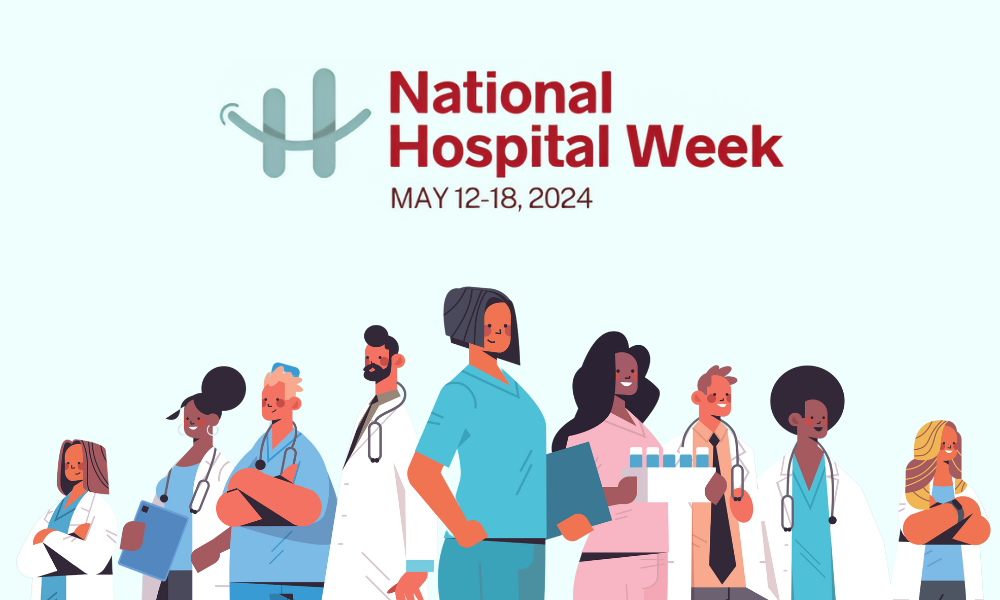In recent years, mergers and acquisitions in healthcare staffing, particularly locum tenens, have – to use a technical term – been off the hook. By our count, there have been eight transactions involving 17 companies in just the past three years.
In the old days, deals like this would primarily be done by large institutional investment banks that might manage trillions of dollars in client assets. Nowadays, it’s boutique firms like Quadriga Partners or Nolan & Associates that are selling one agency to another.
The recent burst of M&A activity helped propel locum tenens to a $6.1 billion share of the healthcare staffing market in 2022. If the current 12% projection for 2023 proves correct, the market will be knocking on the door of $7 billion by early next year.
The uptick in M&A activity started at the height of the COVID-19 pandemic when Doximity, a professional network for healthcare providers, bought THMED in April 2020 and renamed it as Curative.
That timing may seem peculiar, with shutdowns and lockdowns decimating hospitals, but the acquisition didn’t happen overnight. Investment banker Brett Pantazi of Nolan & Associates worked on the team that advised Doximity. He says they collaborated for years, helping identify assets that could marry Doximity’s technology platform with a human capital partner.
![]()
“From 2017 to 2019, we spoke with over 50 locums and physician recruiting companies on behalf of our client, Doximity. We met a lot of great companies, and also kissed a few frogs,” Pantazi says with a laugh. “This enabled us to hone our locums knowledge and help Doximity identify what best suited their locums acquisition needs. Our efforts ended with Doximity’s acquisition of THMED in the Spring of 2020. THMED/Doximity was one of the few M&A transactions in all industries during that timeframe due to the pandemic, let alone the locums M&A market.”
Pantazi isn’t far off. Early in the pandemic, healthcare facilities clamored more for travel nurses than locum providers. Although the locum tenens segment saw a 13% increase in revenue in 2021, M&A action was rather limited. Locums growth was paltry compared to the 150% increase the travel nursing segment experienced. However, the M&A market shifted back toward locums in late 2021 as nurse staffing M&A activity cooled because of bill and pay rate contraction and lower volumes, Pantazi adds.
Read our Full Profile on Nolan & Associates
“The healthcare staffing market can be unpredictable, as we saw from 2020-2022 in nurse staffing,” Pantazi says. “Locums is perceived to be more stable with recurring ‘sticky’ revenue and recession-resistant ‘safe haven’ characteristics. Buyers and investors have always coveted the supply/demand imbalance in locums, and physicians represent the profit centers of hospitals. These factors propelled locums M&A back into the spotlight for buyers and private equity investors.”
What followed from mid-2022 to today were a series of moves from major locums players.
- Ingenovis Health acquired Vista Staffing Solutions in April 2022.
- Cross Country Healthcare snapped up Nolan clients Mint Medical Physician Staffing and Lotus Medical Staffing in October 2022.
- Barton Associates sold to global alternative investment firm H.I.G Capital in November.
- A month later, Cross Country added Hireup Leadership to their cart.
- Acacium Group, a London-based healthcare and clinical staffing provider, secured Nolan client Sumo Medical in September 2023.
- Not to be outdone, in October 2023, AMN Healthcare absorbed Nolan client MSDR, which consists of locums agencies Medical Search International and DRW Healthcare Staffing.
- A month later, Epic Staffing Group nabbed locums agency SBG Healthcare (Nolan client).
There’s much more where that came from. These are just acquisitions of locums agencies, not healthcare technology companies or artificial intelligence platforms that larger staffing firms have made during this timeframe.
In 2022, staffing experts predicted a 20% decrease in the nursing segment, followed by a 30% contraction in 2023 and an additional 5% drop in 2024. Faced with such dismal returns, strategic and private investors wanted to find a business model with solid infrastructure and excellent revenue potential for their next investment. Locum tenens was the next logical staffing segment for investors and buyers to pursue, Pantazi says.
Locums Save The Day
During COVID-19, locum tenens physicians and advanced practice providers were pivotal in addressing the unprecedented surge in healthcare demand. Staffing agencies helped deploy locum tenens providers to some of the hardest-hit areas in the country, and agencies revenues soared as a result.
Now, in a so-called post-pandemic world, there’s a significant lack of access to quality healthcare in rural communities in the US. Facilities are consistently operating below capacity. Chronic understaffing has led to higher levels of burnout and, in some cases, unionization, forcing healthcare facilities to find creative options to fill critical staffing gaps.
Locums as an Insulated Investment
The locums industry experienced exponential growth over the pandemic, shattering projections and surging as one of the few healthcare staffing segments thriving in the current economy.

“The reality from a staffing perspective is that the fungibility of something like nursing is different from an actual physician,” says Ficken. “A lot of our time is spent educating the financial sponsor markets on why locums is different from nurse staffing. There may be more opportunity in nurse staffing. But, I think locums is a better and more insulated kind of investment.”
Read our Full Profile on Quadriga Partners
Ficken says firms like Quadriga are responsible for explaining the “disproportionate value proposition” between locum tenens and other healthcare segments. The role of physicians is multifaceted. The care they provide is a healthcare facility’s primary driver of revenue. Locum tenens is an investment where acquirers get to help address the healthcare industry’s staffing shortage while benefiting financially from a sector that experienced 12% growth in 2023 with no end in sight.
Simply put, locum tenens is a no-brainer for decision-makers capable of acquiring more locums companies. It’s an opportunity any investor should want to pursue, and that’s why Ficken says there’s been a significant uptick in M&As in the locum tenens space.
Educating Investors on the Locums Landscape
In investment banking, a sponsor is often a private equity firm that acquires equity stakes in companies. They can provide capital, strategic advice, and sometimes operational support, helping structure deals and guide complex negotiations.
Although sponsors are standard in M&A, they’re not mandatory; companies can independently conduct M&A for “strategic acquisitions,” where one company purchases another. By and large, strategic locums investors understand what’s happening in the market. But private equity groups have long been painting healthcare staffing with a “broad brush,” according to Jim Chandler, chief operating officer for Quadriga.
“Locums can get lumped into the broader staffing market,” Chandler says. “There are some similar aspects, but there’s a reason why there are different subsectors and verticals. If you’re an operator in that space for long enough, you start to understand those nuances, which can start to compound.”
Chandler began his relationship with Quadriga in 2017 as a party in one of those strategic acquisitions. At that time, he was president of Onyx M.D. Onyx hired Ficken and Quadriga to help scale the business and secure a sponsor, eventually selling to the agency formerly known as Health Carousel Locum Tenens.
“I was introduced to Jason in 2017, and in early 2018, like many companies, especially in the locums space, anybody that had been around for years had been contacted by an investment banker,” Chandler says. “There was a buyer — or sponsor — we had contacted. We needed a partner to come alongside, leverage what we do well, and then lean on the sponsor to fill in the gaps. In the first 15 minutes of talking to Jason, I knew we would go with their firm.”
Much of what Ficken does for companies like Onyx and other financial sponsors relies on education. The locums boom is compelling, but he says it doesn’t immediately translate to more investors if firms don’t understand the locum tenens market or have the experience in locums to fully explain it.
“Our point of emphasis is always education,” Ficken says. “There are a lot of proverbial ‘car salesmen’ in the industry that are just trying to make a transaction. We are always trying to educate a prospective client first — and we don’t mean that in a pejorative sense. We like to use the term ‘adviser’ because we want to walk alongside our clients to ensure they are informed. That relationship then becomes more intimate, and that’s the spirit of where we see that from.“
Taking Locum Tenens’ Pulse
Investment firms are looking for a sponsor or partner that is willing and ready to learn, Chandler claims. Firms can help clients pinpoint areas where they can improve their leadership and operational inefficiencies, which allows them to maximize a transaction.
“One of the big reasons we [Onyx M.D.] decided to partner with a firm was because we didn’t have the resources to scale,” Chandler reiterates.
Pantazi says he does his best to keep his finger on the pulse of the locums industry by leveraging third-party, industry-specific resources to help inform lenders and big locums players of what is possible if they choose to move forward with a merger or acquisition. Like Quadriga, Nolan & Associates advises clients on making themselves more marketable, but ultimately, buyers will be “wherever there is a clear supply versus demand imbalance.”
“I think there are a lot of drivers here for a business, first of all, the external factors of what buyers are looking for,” Pantazi says. “We’ve had more institutional capital in the market, creating more visibility. The physician shortage has been a clear value proposition for locums acquisitions. [Locums] is a business with a supply-demand imbalance where the mission-critical profit center lies, and that’s in the MD.”
Chandler agrees the supply vs. demand economics alone makes locums a smart acquisition. Reports show a mounting physician gap; the US could see a potential shortage of between 37,800 and 124,000 physicians by 2034.
“Locums is very niche,” Chandler says. “It’s an area with a lot of growth potential from the buyer’s perspective because of how locum tenens can address physician aging, burnout, and physician shortage. When you have that level of supply and demand, there will be an appetite from an M&A standpoint to be in that space.”
Chandler and Pantazi each said nurse staffing growth helped amplify the locum tenens message to other investors. Many of them reaped the rewards of investing in nursing, and they want to further those investments with locums.
The Future of M&A in the Locum Tenens Industry
What’s next for the locum tenens industry? The data shows that this market will only continue to grow. Staffing Industry Analysts predict an 8% expansion of locum tenens in 2024, but Pantazi was a bit more conservative with a prediction of 7% growth.
The locums industry surge has created a healthy environment for investors to take a chance on locum tenens, a healthcare subsegment many may not even know existed, and strike while the iron is hot.
Ficken says roughly five to seven larger privately held companies in the marketplace have revenue north of $100M, and four or five exist in the $50M-100M range. He wouldn’t be surprised to hear of more M&A activity soon in those middle markets, an activity that would cause a ripple effect throughout the industry.
“You’ve got this great tsunami holding everything up,” Ficken says. “Then a lot of the exogenous variables could create some headwinds. I think you’ll probably see a half-dozen guys in the $50-100M market trade quickly, following on the heels of two or three other dominoes we know of that will transact and make news. Then, if I’m in that 50-100M range, the acquisitions will make an environment that ironically makes the buyer market bigger.”
The market gets more prominent as acquisitions create visibility, which could create an avalanche of interest from the financial sponsor community, according to Ficken.
Pantazi also expects significant growth and more consolidation in the locums industry.
“A lot of $25 million to $100 million businesses will continue to transact and combine with bigger organizations. We’ll see some of those recapitalized by private equity in hopes of moving up and selling again,” Pantazi says. “Right now, locum tenens is still a fragmented market, but this market will continue to grow.”









